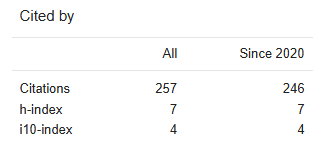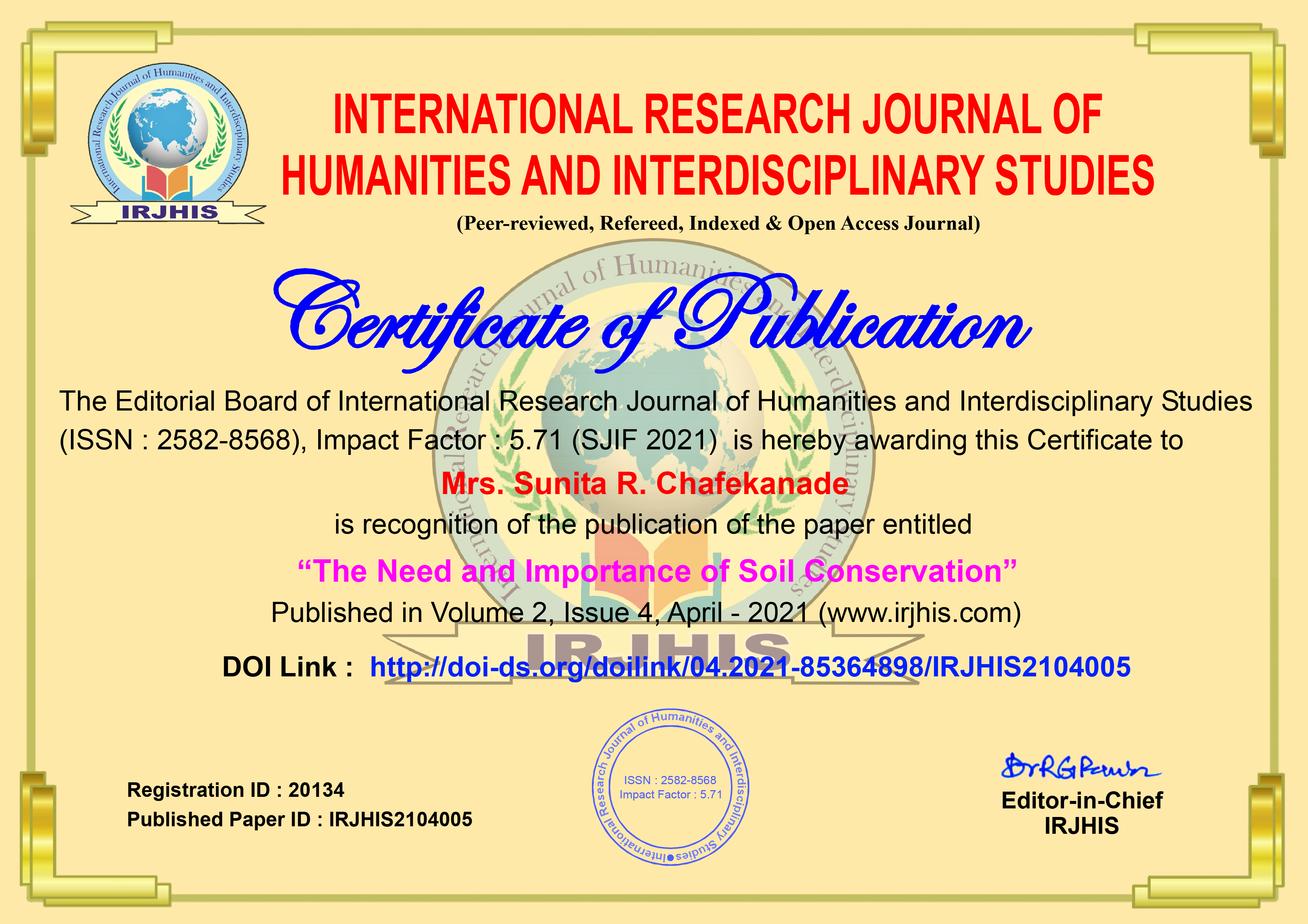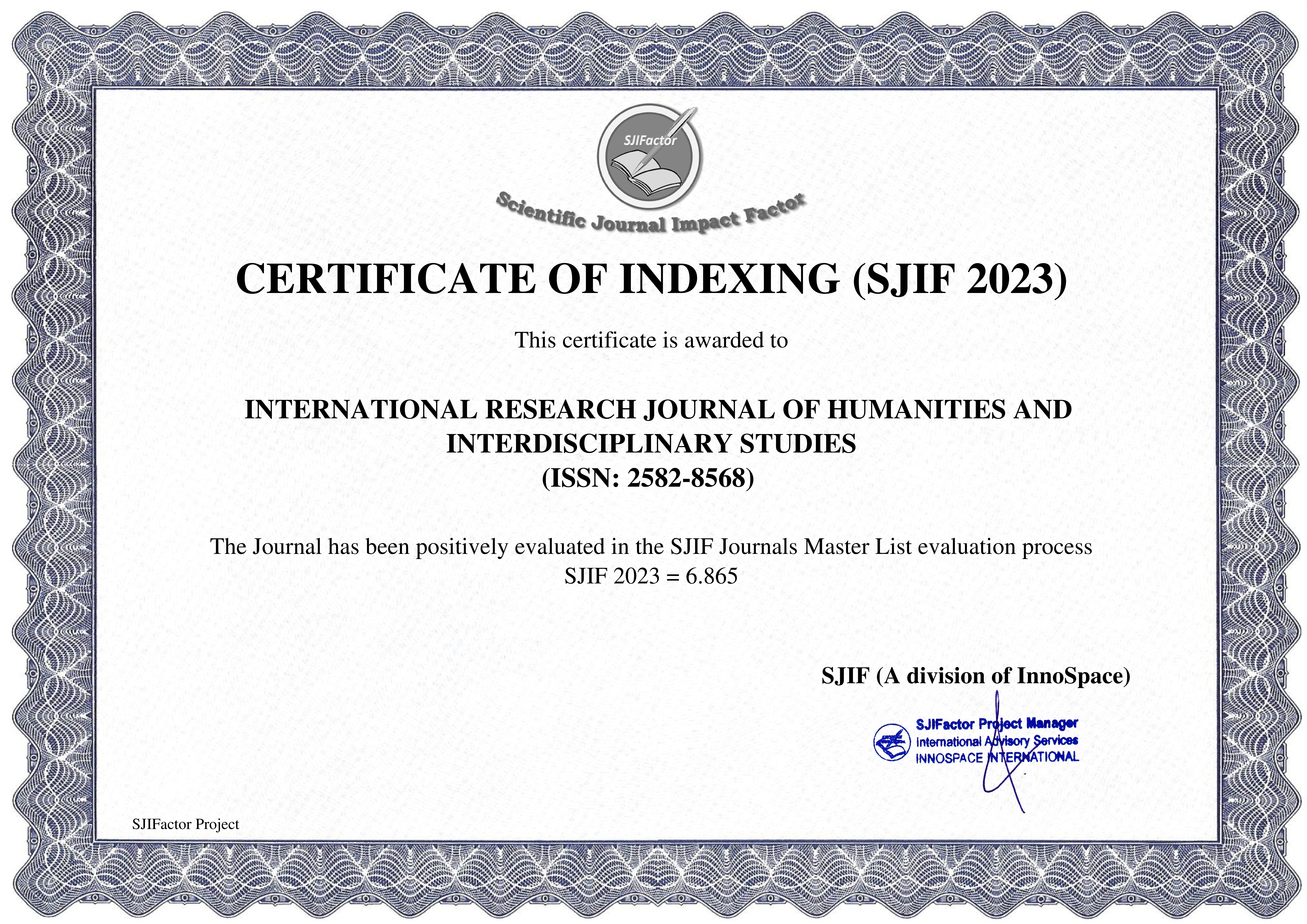Paper Details


Call For Papers
Volume 06, Issue 12
Frequency: 12 Issue per year
Paper Submission: Throughout the Month
Acceptance Notification: Within 2 days
Areas Covered: Multidisciplinary
Accepted Language: Multiple Languages
Journal Type: Online (e-Journal)
Announcement

Publish books with ISBN Number
- Edited Book
- Text Book
- Ph.D Thesis
- Conference Proceedings
ISSN Number:
2582-8568
Journal DOI No:
03.2021-11278686
Title:
The Environmental Repercussions of Cloud Seeding on Agriculture
Authors:
Cite this Article:
,
The Environmental Repercussions of Cloud Seeding on Agriculture , International Research Journal of Humanities and Interdisciplinary Studies (www.irjhis.com), ISSN : 2582-8568, Volume: 5, Issue: 4, Year: April 2024, Page No : 273-280,
Available at : http://irjhis.com/paper/IRJHIS2404033.pdf
Abstract:
Cloud seeding, a technique used to modify weather patterns by inducing precipitation, has gained attention as a potential solution to water scarcity in agriculture. However, its environmental implications, particularly in agricultural ecosystems, remain uncertain. This paper aims to explore the environmental repercussions of cloud seeding on agriculture.The effectiveness of cloud seeding in enhancing precipitation varies depending on factors such as atmospheric conditions, seeding methods, and geographical location. While some studies show promising results with increased rainfall or snowfall following cloud seeding operations, others yield mixed or inconclusive findings. This variability underscores the complexity of cloud seeding and the need for further research to assess its efficacy in different contexts.Cloud seeding can impact soil health and nutrient dynamics through alterations in precipitation patterns and water availability. While augmented rainfall resulting from cloud seeding may replenish soil moisture and nutrients, excessive or erratic precipitation can lead to soil erosion, nutrient leaching, and water logging, posing challenges to soil fertility and agricultural sustainability.In terms of water resources management, cloud seeding raises important considerations for regions reliant on reservoirs, aquifers, and irrigation systems for agriculture. While increased precipitation from cloud seeding may contribute to water replenishment, concerns exist regarding the equitable distribution and sustainability of water resources, as well as potential conflicts over water allocation among different stakeholders.The impacts of cloud seeding on crop productivity and agricultural sustainability are multifaceted. While enhanced precipitation can support crop growth and yield, the timing, intensity, and distribution of rainfall are critical determinants of agricultural outcomes. Moreover, excessive reliance on cloud seeding as a drought mitigation strategy may have long-term implications for agricultural resilience and ecosystem stability.Cloud seeding also has ecological ramifications beyond agriculture, affecting biodiversity, habitat suitability, and ecosystem services. Changes in precipitation patterns may alter ecological processes, disrupt ecosystem functioning, and challenge the resilience of natural systems. Understanding these ecological implications is essential for informed decision-making and sustainable environmental management.
Keywords:
Cloud Seeding, Agriculture, Environment,
Publication Details:
Published Paper ID: IRJHIS2404033
Registration ID: 21416
Published In: Volume: 5, Issue: 4, Year: April 2024
Page No: 273-280
ISSN Number: 2582-8568
Download Full Paper: Click Here
Article Preview:





